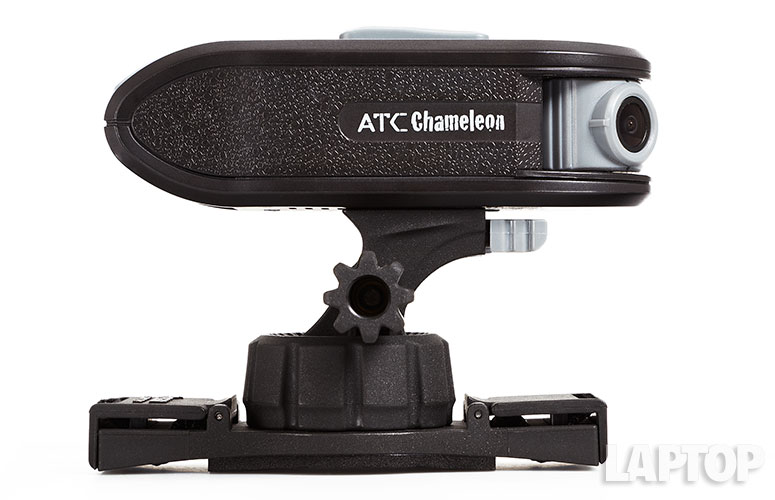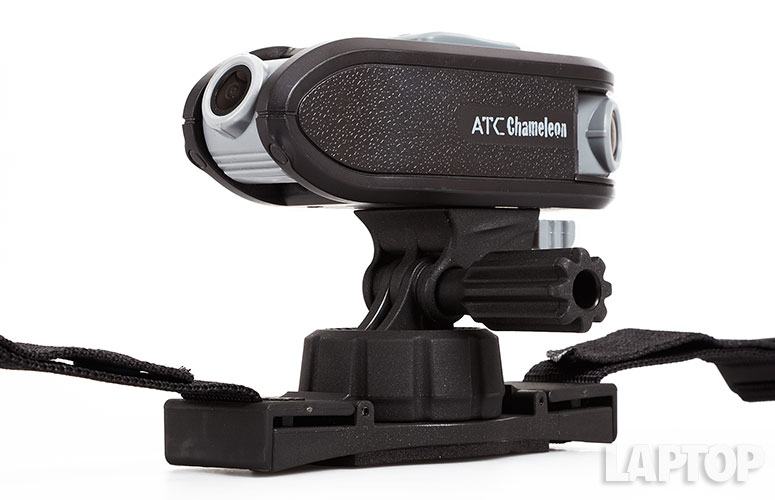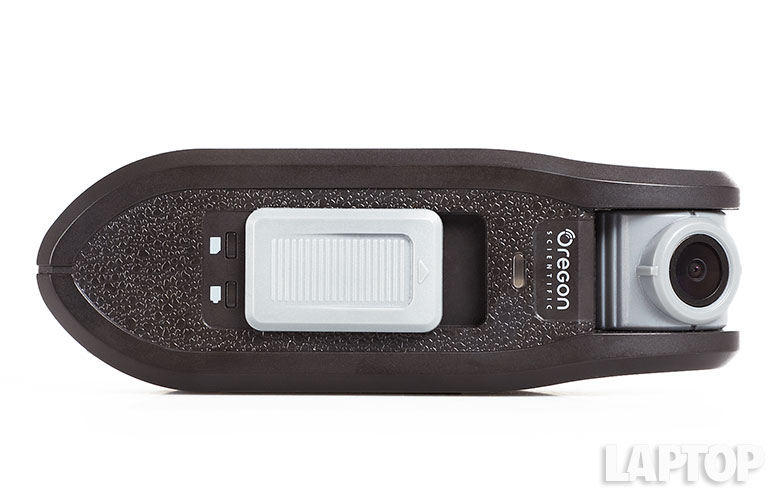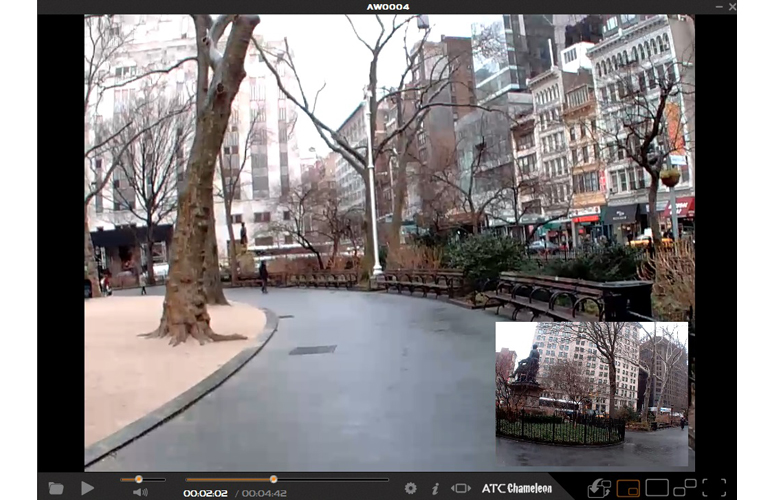Laptop Mag Verdict
The Oregon Scientific ATC Chameleon action cam lets you record what's ahead and what's behind you at the same time, but the video quality isn't worth it.
Pros
- +
Shoots video in front of and behind you simultaneously
- +
Easy controls
Cons
- -
Large
- -
Very bulky mounts
- -
No mobile app
- -
Blurry video
- -
Doesn't take still images
Why you can trust Laptop Mag
Ever wish you had eyes in the back of your head? The Oregon Scientific ATC Chameleon action cam gives you just that ability. With two cameras -- one on the front, and one on the back -- you can record your comings and goings simultaneously. However, this $199 camera pack doesn't quite pack twice the fun.
Design

Click to EnlargeThis is certainly one of the funkiest action cameras we've seen. The ATC Chameleon, made of black plastic with gray accents, has an oblong shape with cameras at either end, and looks like a miniature version of a World War I tank.
While its body is black, both cameras, the on/off switch and the helmet mount are gray. Both cameras rotate 180 degrees: With the mount facing down, the front camera swivels left and right, and the rear camera rotates vertically. It's a nice touch that allows for some leeway when mounting the camera to your person.
On one side of the Chameleon is a locking plastic door that opens to reveal a microSD card slot, microUSB port, a switch to change the orientation of recording and a status button.
By necessity, the Chameleon is a bit larger than most other action cameras: At 4.5 x 1.8 x 1.6 inches, it's almost twice as big as the GoPro Hero3 (2.25 x 1.6 x 1.2 inches).
Mounting options

Click to EnlargeThe Chameleon's mounts are some of the bulkiest we've seen from an action camera. The Chameleon only comes with two mounts: one for a vented helmet and one for a tripod. The helmet mount sticks up nearly 2 inches, making this conspicuous camera all the more so.
An optional hard-shell helmet mount ($29) protrudes just as far.
Performance

Click to EnlargeWe like that the controls on the ATC Chameleon are as simple as the Contour+2: Slide the switch forward to turn the camera on and start recording, and slide it back to stop.
Each lens has a 170-degree field of view, which is pretty standard for action cams. There are no other settings, save for the switch inside the camera. This lets you change the two views from appearing side by side, or one on top of the other.
In horizontal mode, each camera in the ATC Chameleon records video at 960x720 pixels and 30 frames per second. In vertical mode, the cameras record 1280x720p video at 30 fps. Unlike most other action cams, this device doesn't take still images.
[sc:video id="MxcXA1cTpv7nDposVjnJw8NuaFTEbc0e" width="575" height="398"]
While walking through Madison Square Park, video wasn't very crisp. It was hard to make out the faces of a bunch of tourists taking photos of a squirrel eating on a park bench. Colors were fairly saturated, but well below those of the Contour+2 or the GoPro Hero3.
Audio was particularly poor. Even just walking down the street, our recorded video had a significant amount of wind noise.
Editing

Click to EnlargeThere's no iOS or Android app for the Chameleon. A desktop app for Mac and PC, though, offers some interesting editing options. You can choose to view the two videos side by side, just the front or the back, or have one video inset in the other.
Battery life
Oregon Scientific says the Chameleon should last 2 hours on a charge. In our testing, we got slightly more, 2 hours and 13 minutes, which is about average for an action camera.
Verdict
The idea of having two cameras in one action cam is a neat idea. However, Oregon Scientific's ATC Chameleon is too unwieldy, video quality isn't nearly up to par and it lacks many features other cameras in this price range offer. Having two of everything isn't always better.
Oregon Scientific ATC Chameleon Specs
| Company Website | http://us.oregonscientific.com |
| Size | 4.5 x 1.8 x 1.6 inches |
| Weight | 4.4 ounces |
Michael was the Reviews Editor at Laptop Mag. During his tenure at Laptop Mag, Michael reviewed some of the best laptops at the time, including notebooks from brands like Acer, Apple, Dell, Lenovo, and Asus. He wrote in-depth, hands-on guides about laptops that defined the world of tech, but he also stepped outside of the laptop world to talk about phones and wearables. He is now the U.S. Editor-in-Chief at our sister site Tom's Guide, where he oversees all evergreen content and the Homes, Smart Home, and Fitness/Wearables categories for the site..
